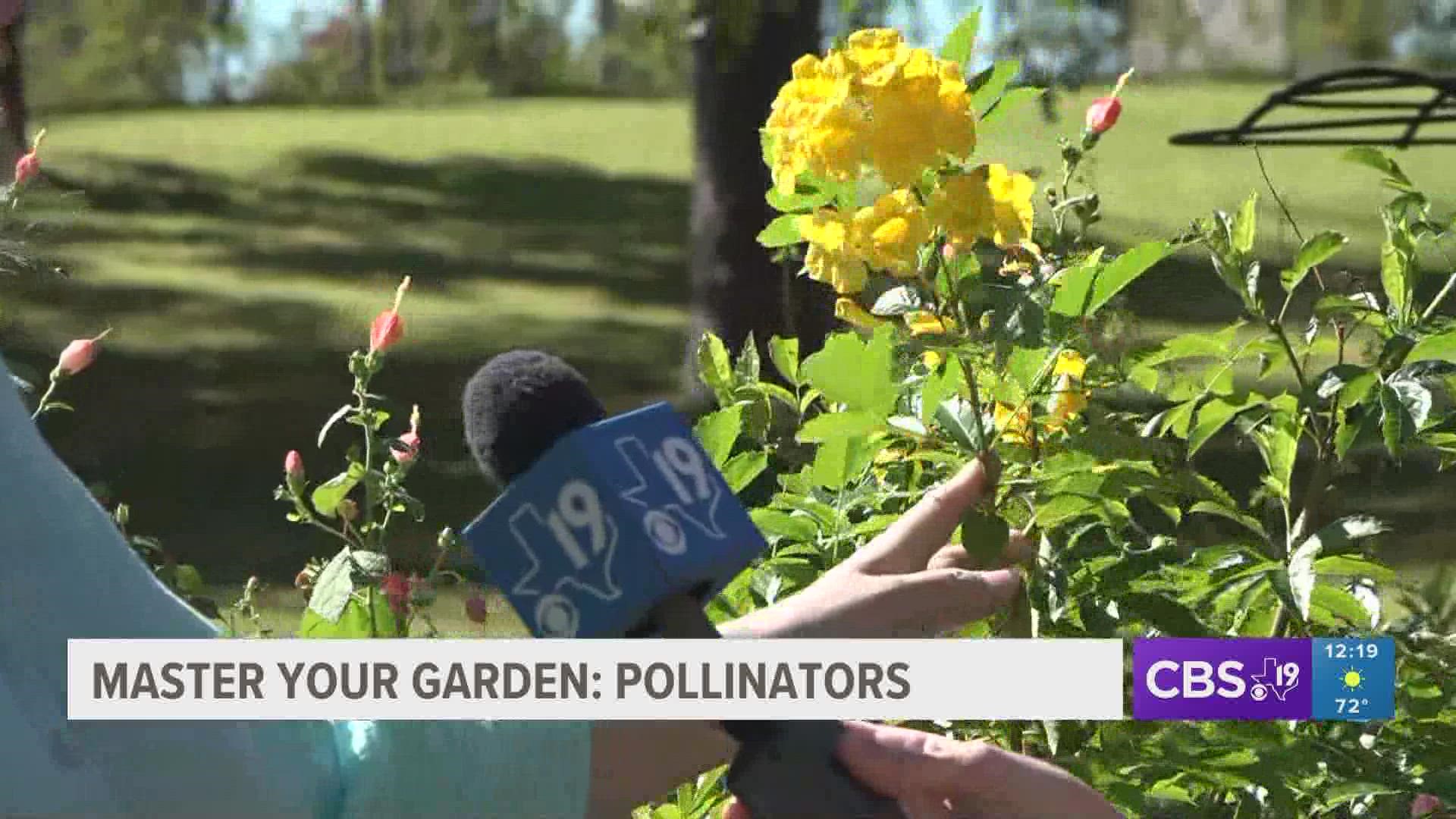TYLER, Texas — Fall is officially in full bloom! As our leaves begin to change color, so will the variety of pollinators that visit your garden.
Master Gardener Vicki Lewis said attracting birds, bees, and butterflies to your garden in autumn is easy. Lewis suggests taking a picture of plants with the most activity around your neighborhood, trails, and gardens. That way, you can find them in the nursery.
"The first thing you want to do is watch, and be observant," Lewis said. "Are they hovering over this plant, are they getting the pollen from this plant, are they licking the water off of that plant? You don't need to do a lot to build a habitat."
If you are afraid of a pollinator, like bees, Lewis suggests planting the plants that attract that particular pollinator away from your normal path.
"If you're concerned about bees, don't put this (salvia/sage) in your pathway. Put it a little farther into your garden area," explained Lewis. "That way you won't be concerned but you know you're doing your best for those pollinators."
For someone looking for a plant that blooms the longest, a plant like Gold Star Esperanza blooms from late spring through late fall.
"Notice the tubular flowers on these [Gold Star Esperanza] they attract hummingbirds, but also bees," Lewis said.
To make flavorful honey, a plant such as monarda or bee balm will make bees happy. For fluttering butterflies, lantana's umbrella blooms are great landing pads.
Other plants you can try are cigar plants, larkspur, dianthus or the hardy knockout rose.
To reach the Smith County Master Gardeners, visit their Facebook page. You can also call their helpline at 903-590-2980 or email SmithMGhelpdesk@gmail.com

